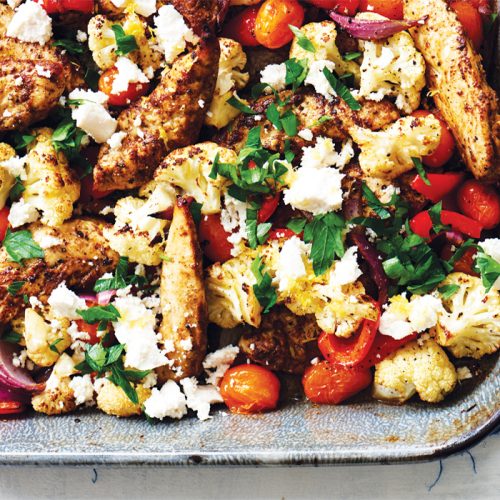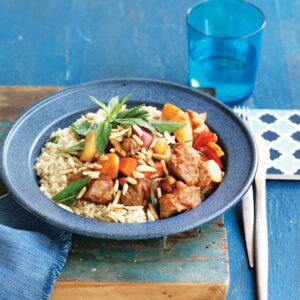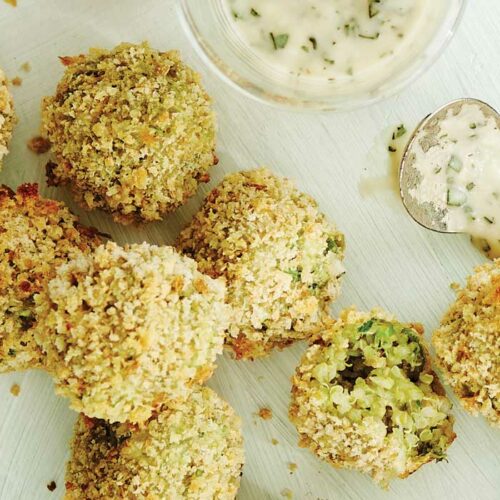
If your body stops responding to insulin properly, your risk of developing pre-diabetes and type 2 diabetes increases. The good news is that you can turn things around before it’s too late. Dietitian Susie Burrell explains how to reverse insulin resistance.
You’ve no doubt heard of type 2 diabetes, a health condition affecting hundreds of millions of people worldwide, and rapidly rising in low-and middle-income countries. But perhaps you’re less familiar with its precursor, insulin resistance, which is an early warning sign you may be on the path to developing diabetes. So what’s all the fuss about insulin and what does it actually do?
Insulin is a hormone released by the pancreas to regulate blood sugar levels and metabolise fat and protein. Whenever we eat carbs, our digestive system breaks them down into a sugar called glucose in the bloodstream. This glucose is taken into cells by insulin to be used as energy. Without energy, our cells don’t function properly.
What is insulin resistance?
In healthy bodies, the release of insulin is regulated to balance food intake. When insulin is not working properly, high levels of glucose remain in the bloodstream, and because the pancreas still senses these high levels, it makes even more insulin to process glucose. One of the biggest issues is that, over time, high insulin levels cause fat storage in the body.
Initially, this happens in small degrees, with small amounts of insulin secreted after every meal. Over time, high insulin levels affect the body’s ability to break down stored fat in cells. It also causes blood sugar and energy level fluctuations, plus fatigue and abdominal weight gain. After weeks, months or years, you may develop insulin resistance, which is likely to progress to type 2 diabetes.
What causes insulin resistance?
Many factors can contribute to insulin resistance. Some people have a genetic link to type 2 diabetes. Lifestyle factors also play a part. Eating too many refined carbohydrates, such as white rice and bread, fried foods and processed snacks requires higher levels of insulin to be released. Couple this with a sedentary lifestyle — specifically a lack of regular, high-intensity exercise — and the result is weight gain, which can lead to insulin resistance.
Studies show that weight loss is the key to reversing both type 2 diabetes and insulin resistance, with one study revealing just a 10 per cent weight loss from better diet and more exercise improved insulin resistance by 80 per cent.
7 signs of insulin resistance
1 Fatigue
This is the most common symptom of insulin resistance, since the body is not processing energy efficiently.
2 Sugar cravings
Because insulin and sugar levels are fluctuating widely during the day, craving sugar is another common symptom.
3 Increased body fat
Insulin causes fat to be stored specifically around the abdominal area, which is why people with insulin resistance often have a large belly.
A waist measure of up to 80cm for women and 94cm for men is within the healthy range, so anything greater is cause for concern.
4 Inability to lose weight
Other signs include an inability to lose weight despite a healthy diet.
5 Bloating
Excess insulin can damage the kidneys, which have to work overtime to filter blood. The kidneys end up holding on to salt and water, which can cause bloating.
6 Excessive thirst and need to pee
These are signs there may be too much sugar in your bloodstream.
7 Skin changes
Research has shown a link between insulin resistance and the growth of skin tags and pigmentation, but why this is so remains unclear to scientists.
The role of carbs
Because insulin regulates both glucose and fat metabolism, any disruption to insulin affects our ability to burn fat.
The body then holds onto fat stores, which is why people who eat a healthy, calorie-appropriate diet, which would usually result in weight loss, fail to lose weight.
Following a standard low-fat, high-carb diet filled with whole grains, fruit and low-fat snacks can actually make insulin resistance worse.
This doesn’t mean you have to follow a low-carb diet. Instead, eat controlled portions of low-GI carbs at each meal and snack, and team them with protein-rich foods like eggs, fish, meat, dairy and nuts to reduce your carb intake to 30 to 40 per cent of your overall energy intake. Reducing your carb load will help to reduce the amount of insulin released, and lower levels over time, improving your sensitivity to insulin.
While some people with insulin resistance stop eating carb-rich foods like bread, pasta, rice, grains and fruit altogether, there is a downside. Eliminating carbs entirely in the short term means that minimal amounts of insulin will be required to regulate glucose, and the muscles will be forced to break down both muscle and fat to fuel muscles.
Over time, this reduction in muscle mass results in a slower metabolism. A low-carb diet also doesn’t improve the underlying insulin resistance. This means that if you reintroduce carbs into your diet, the insulin resistance may be worse, making it even more difficult to lose weight.
13 ways to reverse insulin resistance
1 Breakfast early
A study revealed people who ate breakfast before 8.30am had less insulin resistance than those who ate breakfast later in the day.
2 Watch the drinks
Fruit juice, large milk coffees and alcohol all contain significant amounts of calories, so limit sugary drinks and the number of days a week that you enjoy an alcoholic drink.
3 Cut the sugars
Check food labels and avoid snack foods, treats, desserts and yoghurts that contain large amounts of added sugars. Aim to consume no more than 5g of added sugars in meals per serve, and no more than 25g per day.
4 Control sugar cravings
Whenever you crave a sweet treat, distract yourself with a walk or a chat with a friend. Instead of something sweet, drink green tea after meals, or eat protein-rich foods, such as a slice of cheese or a handful of nuts.
5 Try fasting
There is growing research to indicate that a day or two of light eating or intermittent fasting can help to reduce insulin levels. But always eat something — never starve yourself.
6 Count your carbs
Choose meals that contain 20 to 30g of carbs per serve, and aim for carbs to be 30 to 40 per cent of your overall kilojoule intake. Use a monitoring app such as ‘myfitnesspal’ to keep an eye on your carb intake.
7 Go easy on snacks
Leave at least three hours between meals so you only need to have one or two snacks a day.
8 Focus on fibre
Getting 30g of fibre every day from wholegrain bread, crackers, cereal, two pieces of fruit and seven to 10 serves of veggies will keep you feeling full and satisfied, even when eating fewer calories.
9 Move a lot more
Remember that 10,000 steps is the minimum, not your target. The more steps you take, especially after a meal, the better effect it will have on insulin and glucose control.
10 Load up on veggies
Make sure to include veggies at every meal. Bumping up your five a day to seven or 10 serves will help reduce your calorie intake and support weight loss.
11 Go light at night
Eating lighter meals of grilled fish, lean meat or chicken with veggies, soups or warm salads at night is an easy way to cut calories and support weight loss.
12 Add in exercise
Once you’re taking at least 10,000 steps each day, add a couple of exercise sessions to elevate your heart rate as this will help muscles process insulin more efficiently.
13 Improve your sleep
If you’re sleeping fewer than five or six hours a night it will be difficult to reduce your insulin levels and reduce your weight.
Over time, high insulin levels diminish the body’s ability to break down stored fat.
If you suspect you have insulin resistance, ask your GP for a Glucose Tolerance Test with insulin levels to get an official diagnosis.
Article sources and references
- Bouchonville M. 2014. Weight loss, exercise or both, and cardiometabolic risk factors in obese older adults: results of a randomized controlled trial. Int J Obes. 38(3): 423–431.https://www.ncbi.nlm.nih.gov/pmc/articles/PMC3835728/
- Cerf ME. 2013. Beta cell dysfunction and insulin resistance. Front endocrinol. 4: 37.https://www.ncbi.nlm.nih.gov/pmc/articles/PMC3608918/
- de Luis DA et al. 2015. Effects of a high-protein/low carbohydrate versus a standard hypocaloric diet on adipocytokine levels and insulin resistance in obese patients along nine months. J Diabetes Complications. 29(7): 950–4.https://pubmed.ncbi.nlm.nih.gov/26166555/
- Diabetes Prevention Program Research Group. 2015. Long-term effects of lifestyle intervention or metformin on diabetes development and microvascular complications over 15-year follow-up. The Lancet. 3(11): 866–875.https://www.thelancet.com/journals/landia/article/PIIS2213-8587(15)00291-0/fulltext
- Kodama S et al. 2009. Influence of fat and carbohydrate proportions on the metabolic profile in patients with type 2 diabetes: a meta-analysis. Diabetes Care. 32(5): 959–65.https://care.diabetesjournals.org/content/32/5/959
- Science Daily. 2021. Eating before 8:30am could reduce risk factors for type 2 diabetes. Accessed May 2021https://www.sciencedaily.com/releases/2021/03/210318091646.htm
- Thom G et al. 2020. Predictors of type 2 diabetes remission in the Diabetes Remission Clinical Trial. Diabet Med. 1: e14395.https://www.directclinicaltrial.org.uk/Pubfiles/221687.pdf
www.healthyfood.com














